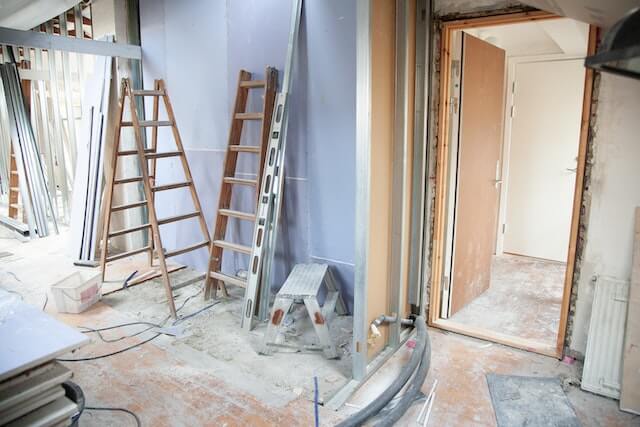As a landlord, one of your primary goals is to maintain a stable tenant base to ensure consistent rental income and minimize vacancies. However, tenant turnover can be a common challenge in the rental real estate market. Understanding the reasons why tenants choose to leave and implementing proactive strategies can help landlords reduce turnover and create long-term, mutually beneficial relationships with their tenants. In this article, we will explore the common reasons why tenants leave and provide actionable steps landlords can take to minimize tenant departures.

Insufficient Property Maintenance and Repairs
One of the leading reasons tenants choose to vacate a rental property is inadequate maintenance and delayed repairs. When tenants experience issues such as leaky faucets, malfunctioning appliances, or persistent pests without timely resolution, it can lead to frustration and dissatisfaction. To minimize tenant departure due to maintenance-related issues, landlords should:
- Implement Regular Maintenance: Establish a proactive maintenance schedule to address routine inspections, repairs, and preventive maintenance tasks. Promptly respond to maintenance requests and ensure repairs are completed efficiently.
- Maintain Open Communication: Encourage tenants to report any maintenance issues promptly and provide multiple channels for communication, such as email, phone, or an online portal. Respond to their concerns promptly and keep them informed about the progress of repairs.
Rent Increases without Justification
Significant rent hikes without adequate justification can drive tenants to seek alternative housing options. To minimize tenant departures due to rent increases, landlords should:
- Research Local Rental Market: Stay informed about the rental market trends in your area. Consider factors such as supply and demand, comparable rental rates, and the condition of your property to determine reasonable rent adjustments.
- Communicate Transparently: When planning to increase rent, communicate the reasons behind the adjustment to your tenants. Highlight any improvements or added amenities that justify the increase. Providing advanced notice allows tenants to plan their budgets accordingly.
Lack of Amenities and Upgrades
Tenants seek properties that offer comfort, convenience, and a pleasant living experience. A lack of desirable amenities and outdated features can prompt tenants to explore other rental options. To minimize tenant departures due to inadequate amenities, landlords should:
- Assess Tenant Preferences: Understand your target tenant demographic and their preferences. Identify amenities or upgrades that can enhance their living experiences, such as modern appliances, energy-efficient features, or communal spaces.
- Invest in Property Upgrades: Regularly assess the condition of your property and allocate resources for necessary upgrades. Focus on cost-effective improvements that add value and attract tenants. Consider incorporating amenities that align with tenant preferences, such as a fitness center, laundry facilities, or outdoor recreational areas.

Ineffective Communication and Relationship Building
Poor communication and a lack of relationship-building can lead to tenant dissatisfaction and eventual departure. To minimize tenant departures due to communication issues, landlords should:
- Maintain Prompt and Professional Communication: Respond to tenant inquiries, requests, and concerns in a timely and professional manner. Establish clear communication channels and be accessible to address their needs promptly.
- Foster Positive Tenant-Landlord Relationships: Build rapport with your tenants by treating them respectfully and fairly. Conduct periodic check-ins to gauge their satisfaction, address any concerns, and make them feel valued. Consider organizing community events or offering incentives to foster a sense of community within the rental property.
Additional Factors That Influence Tenant Departures
In addition to the previously mentioned reasons, several other factors can contribute to tenants deciding to leave a rental property. By understanding and addressing these factors, landlords can further minimize tenant departures. Here are some common reasons and corresponding strategies:
- Insufficient Living Space: Inadequate living space can lead to tenant dissatisfaction. Landlords can address this issue by maximizing the use of available space, considering renovations or reconfigurations, and ensuring that the property’s layout and size meet the needs of tenants.
- Better Options in the Market: If tenants perceive that there are better rental options available elsewhere, they may choose to move. To retain tenants, landlords should focus on providing exceptional value through well-maintained properties, desirable amenities, and responsive customer service.
- Noisy Neighbors: Disruptive neighbors can negatively impact the tenant experience. Landlords should address noise complaints promptly, enforce property rules and regulations, and ensure a peaceful living environment for tenants. Open lines of communication with tenants can encourage them to report issues and feel heard.

Finding New Tenants
In addition to the aforementioned strategies, utilizing an effective online listing platform like Padleads can significantly enhance a landlord’s ability to attract quality tenants, should tenant departure becomes unavoidable. By listing rental properties on Padleads, landlords can increase visibility and exposure to a wider audience, target their desired tenants more effectively, streamline tenant screening, and facilitate efficient communication. Leveraging the benefits of Padleads enables landlords to attract new reliable tenants and create a smoother rental process.
In conclusion, minimizing tenant turnover is essential for landlords to maintain a stable rental income and create long-lasting tenant relationships. By addressing common reasons for tenant departure, landlords can significantly reduce turnover rates. Implementing proactive strategies can contribute to tenant satisfaction and increase the likelihood of tenants choosing to renew their leases. By prioritizing tenant needs and building strong relationships, landlords can create an environment that encourages long-term tenancy and benefits both parties involved.